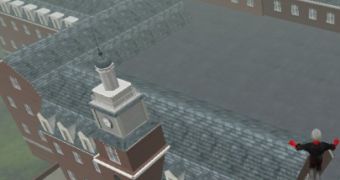American officials funded the development of an artificial reality environment, one that simulates the most common surroundings in China, to be used by future diplomats and other visitors, so as to get used to the various traditional customs in the Asian country. The platform of the simulator is based on the popular on-line game Second Life, which is currently played by millions of people worldwide.
The computer experts in charge of the program used the facilities provided by the game to create an entire artificial city, complete with traditional Chinese architecture and people. Old teahouses, office buildings constructed according to Feng Shui principles and even amusement parks are recreated so as to mimic reality faithfully. The sights are meant to help future American officials traveling to China to surpass the cultural shock as soon as possible.
Julie Henderson, a specialist at the UF College of Pharmacy and current project designer, said "I think what we hope is that this kind of environment can provide a bridge between knowledge alone and actually being in the real-life environment." Simulating actual experiences can be very helpful for people coming in contact with the Chinese or the Asian culture for the first time.
Some argue that no computer program can replicate the exact environment of a crowded Chinese street. Critics say that real experiences should always come first and that, if people want to learn more about a place, they should just go and visit it, not spend even more time in front of a computer. Future developments of this game could lead to the creation of artificial models of several large cities, which opponents to Second Life say will further encourage people to spend time at the computer, instead of going out there and exploring their world.
"In terms of knowledge and empathy toward the culture, we don't yet know the answer to the question of where one medium succeeds and another one fails," concluded lead project investigator Paul Fishwick.

 14 DAY TRIAL //
14 DAY TRIAL //